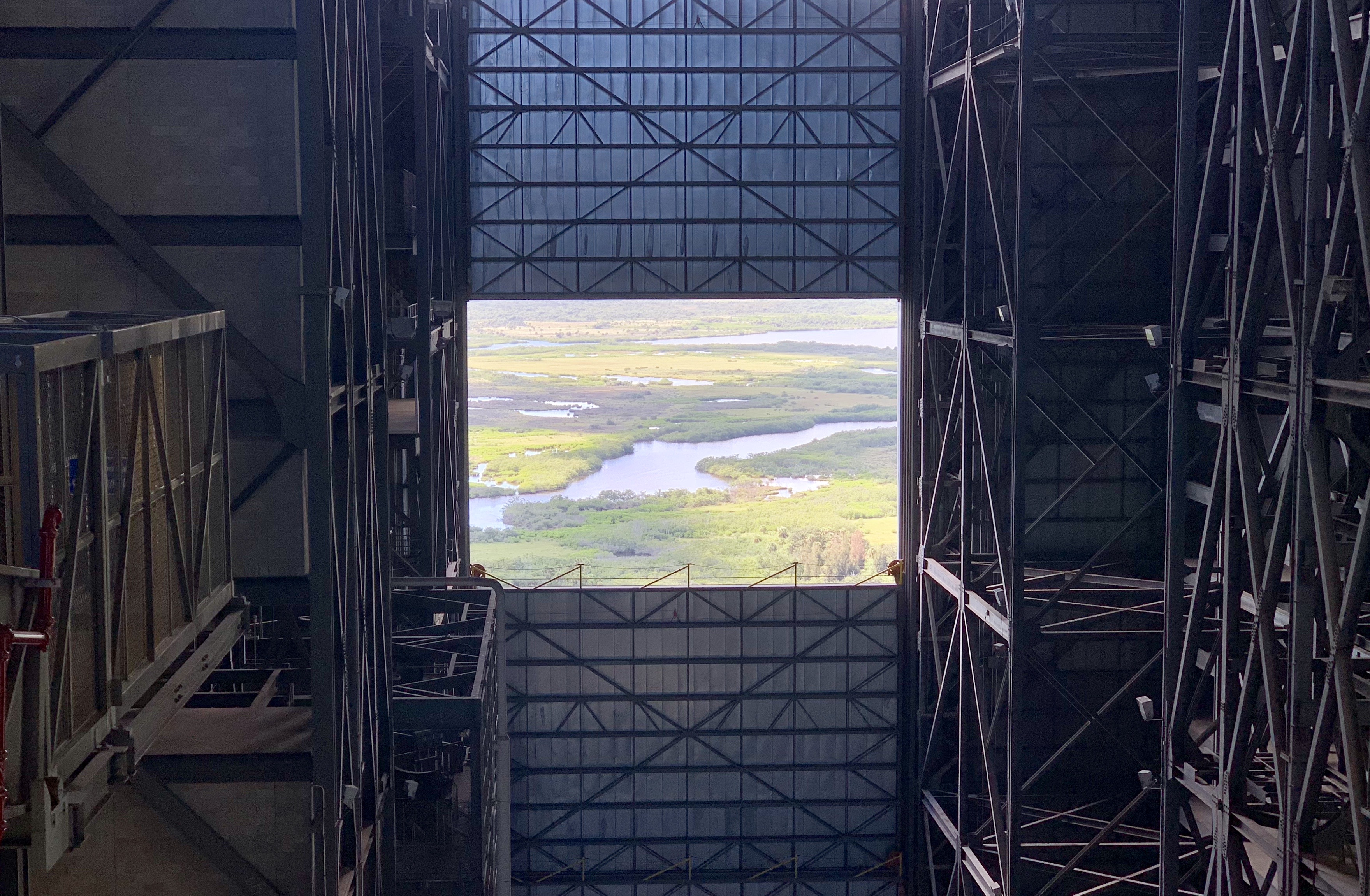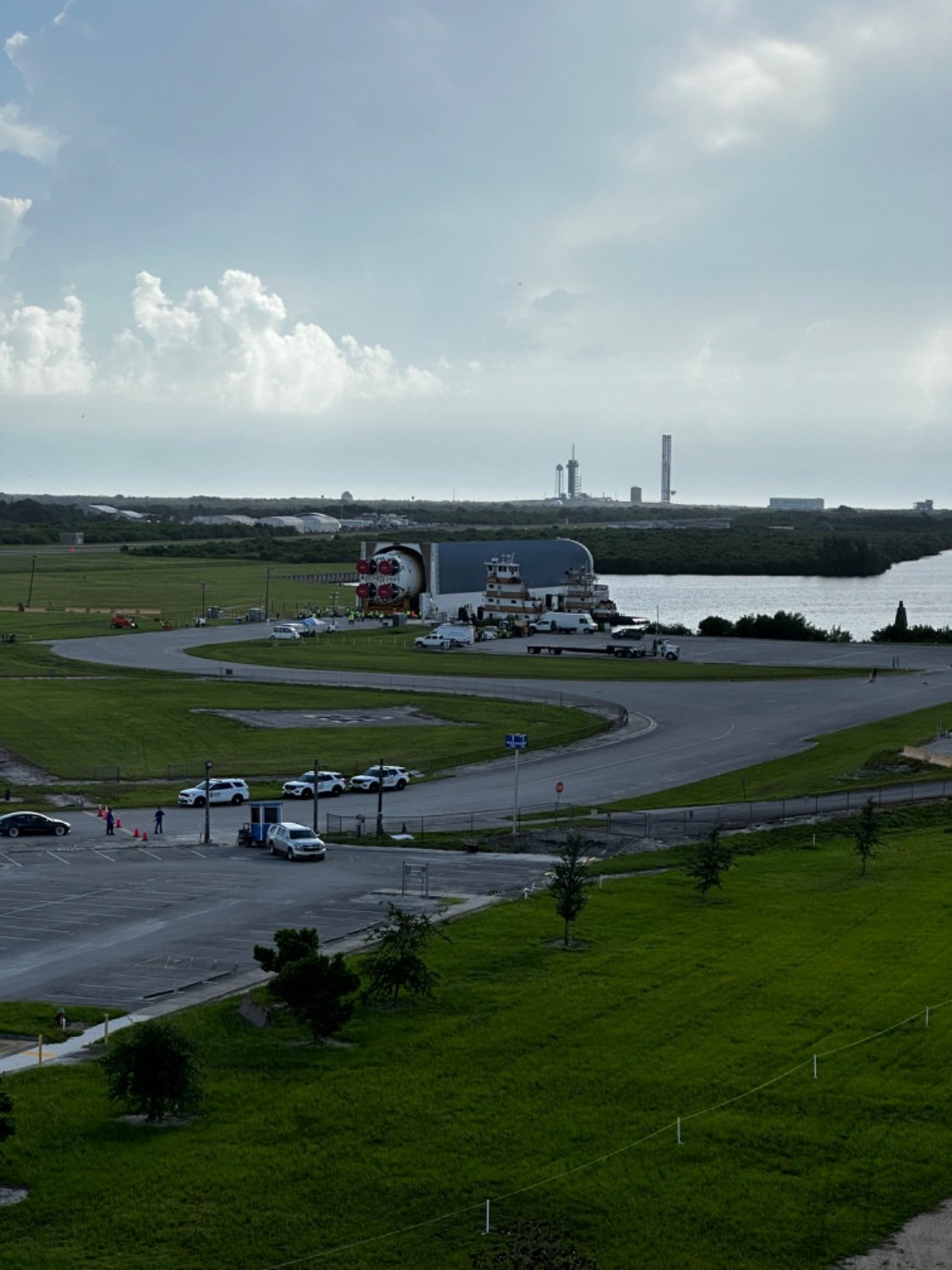

I bet the fine just offsets the cost of the prosecution, it’s not gonna be some settlement, it’s just “time and costs of the lawyers on our side”. Agree that if it’s meant to be punitive, it’s pretty laughable.


I bet the fine just offsets the cost of the prosecution, it’s not gonna be some settlement, it’s just “time and costs of the lawyers on our side”. Agree that if it’s meant to be punitive, it’s pretty laughable.


Nah. Folks are big mad because it’s exactly what we all expected when bezos bought the post. It didn’t immediately slide headlong into the void of bullshit pandering, so we developed a sense of false hope. Now it’s gone, we know it, we’re annoyed, and we’re mad about getting took.
Got it.
Space weather is weather - just like on Earth, it’s subject to so many unknowns and unknowable that reliable predictions are somewhere between really hard and totally impossible.
So - on Earth we don’t try to predict the exact weather that a given building is going to experience before we build it - that’d be super hard. Instead, we look at the rational maximum based on what we have seen and add some on top as a margin of safety… and that’s where we get building codes. Same applies in space - we make some measurements and add a factor of safety to cover our uncertainty. We have the same idea of building standards for pretty much everything except, to some extent, radiation.
The problem is that nobody has really found a workable solution for radiation shielding other than the EM shielding effects of large planetary bodies (see: Earth) or “thick shells of dense mass between the sensitive stuff and the outside.” Dense dumb mass is obviously not a great answer because of the launch cost - some have proposed using water, but you’d need a lot to provide adequate shielding… basically, you need a thick enough shell to match the wavelength of whatever radiation you’re shielding from.
I saw something kinda cool at AIAA Ascend from I think UMich that was proposing to basically pump enough electricity into space that the EM field would generate radiation shielding, but that’s like TRL 0 and electricity is also not always easy to come by.
Anyways, since there’s not a good answer for handling radiation, there’s no “building code” and the level of precision on the radiation level experienced is kinda irrelevant from an engineering standpoint. We can’t effectively protect against any amount, so if it’s >0, we have a problem.
I’d also suggest that from a “routinization” perspective you want a consistent building code, not a precise answer - because weather changes over time.
Both things exist, certainly, but I’m not sure how I’d establish a common unit to describe a set of things that are mostly waves but with a few particles thrown in. It’d have to be some kind of total energy flux through a selected region of space for a given time, and it’d be super specific to both the region and the timeframe since a CME event at the wrong time would really skew your results… I guess it could be some kind of time-average? So the thing you’d need is a total annual average energy flux of both EM and particle radiation through a region of interest. Such a thing certainly could (and probably has) been measured, but I don’t think I’ve ever seen it all combined. This is maybe a start? It at least has all the radiation information in one spot.
I’m not sure I understand the value proposition of having that kind of information if someone took the time to do it, but it’s a fun thing to think about.
So - there are two sources of radiation we think about. There’s radiation from our local bodies - mostly the Sun. The Sun radiates at least some across the entire electromagnetic spectrum, so the trivial answer to your question is “all radiation exists in space to some extent.” There’s also a general “cosmic radiation background” that is (we think) left over from the big bang. That radiation also spans the entire EM spectrum, but at a different distribution to what our Sun emits.
I’m guessing that the trivial answer of “all of it” isn’t what you want and it might be why you’re struggling to find the info you’re searching. Is there a more specific way to formulate your question?


Photo from earlier in the unloading process.


Paywall. Don’t care enough to circumvent it, never heard of this dude, clickbait title is super-annoying. What’s the one simple thing?


It’s the odds-on favorite for the next generation of radiation-hardened space computers (HPSC). Potential to be a 25x improvement over current capabilities. Guessing most of the use cases will be niche like that, but who knows.


The Starship concept of operations requires 11 launches for each mission to the moon - one for the vehicle, another 10 to refuel it once it get into earth orbit. Each of these missions have to autonomously dock and perform a cryogenic fuel transfer.
Nobody, and I mean nobody, has shown an operationally-viable in-space cryo transfer. Even doing it on Earth is a fussy thing - cryo transfer was behind two of the Artemis I scrubs, and NASA’s been doing it since Apollo.
Getting one Starship into orbit is an interesting milestone but it’s a long way from what they promised the world they could do… and the clock is ticking.


I’d frame this discussion somewhat differently. Fixed-cost service contracts are really good when everyone involved knows what the hell they’re doing. When the contractor doesn’t know what they’re doing, they either inflate the bid or under-bid and lose money. When the government doesn’t know what it’s doing, it gives bad requirements and the result is either poor outcomes (spent the money, didn’t get what we needed) or shitloads of change orders (which is where cost-plus bites you anyways).
So - for fixed-price to work, it needs to be for a service both parties fully understand. Guess what? Nobody knows what the hell we’re doing with lunar travel. Not NASA, not the billionaire space enthusiasts, nobody. We’re making it up as we go along… and that’s okay unless we’re locked into contract mechanisms that make adjustment and collaboration difficult. Guess what? That’s exactly what we did.
Fixed-price is a different kind of “screwed” than cost-plus. It’s not less screwed…just different.
Let’s add this technology development piece to the story. Everyone doing space stuff needs CFM. In the old days, NASA would pay a lot of money to have a technology developed… but they’d own the rights and could license it or give it away. In the new world order, NASA is still paying (slightly less) for the technology to be developed… but the solutions may not be broadly useful to the rest of NASA’s goals… and nobody else gets the benefit of the technology. That’s called vendor lock, and vendor lock sucks in any situation.
So I dunno. It’s complicated, but it’s not the fault of the CFM engineers. NASA is indirectly throwing money at CFM, and they’re not getting good value for money in that investment. If you ask me, it’s the fault of the contracts folks for not thinking through these enormously obvious pitfalls and coming up with ways to manage them.


This directive is largely pointless, which is pretty normal for government travel. Absent orders to the contrary, it’s still “lowest-price option that gets you to the destination in time.” 9 times out of 10, that’ll still be the contract airline fare, a basic per diem hotel, and the lowest-bid compact car at the destination.
I’m part of a pretty large subset of government folks that travel largely to large installations (military bases, etc) with no guarantee of EV charging stations because facilities funds have been constricted for decades. The per diem hotels don’t usually have much charger infrastructure either, which means government EV renters will have to run around looking for fast chargers in unfamiliar towns. I’m not at all unusual in this regard; I think it’s pretty unlikely that a given federal govt worker will be able to catch a train to their TDY.
The train thing is goofy except for the northeast and maybe California. I’m not in those places, there isn’t a train station in my zip code, and it looks like POV travel is a no-go now so I can’t leave my immediate vicinity without a rental.
Outside of big population centers, this new rule has no real effect other than to make a few new checkboxes on our travel forms… “did you consider rail travel for this trip? Y/n”, “was an EV rental available at a rate equal to the compact car rate? Y/n
The only thing that would really work here would be a requirement and a subsidy. “Rail travel is required unless the total cost of the rail option is greater than 125% of the air travel option.” “Government travelers are required to rent EVs unless the EV rental price is more than double the cost of a conventional compact.” You’ll also need an “all government buildings shall provide EV charging for official travel.” …and probably a “Government travelers with an EV rental may exceed hotel per-diem by up to $15/night if the hotel has EV charging infrastructure.”


Eric Burger has been against SLS for like 15 years, it’s his whole schtick. Loves making points about how expensive it is, about how late it was, and that it means NASA can’t design rockets anymore. Never talks the other side - how Congress hamstrung the design, how it was consistently under-funded, and how it was shackled to Boeing at the same time that the entire company hit the skids.
SLS was forced to be a Frankenstein rocket slash jobs program by legislative fiat. Of course it’s not sustainable in a financially-constrained environment - it was designed to spread money and jobs just as much as it was designed to deliver payloads.
It’s still the only thing that can put an Orion vehicle in orbit, and Orion is the only vehicle we’ve got today that can get crew off the earth and to lunar orbit, and Artemis I was a masterpiece launch of a first-build rocket.
Another SLS hit piece from Ars Technica isn’t news, it’s just noise.
[email protected] is a direct NASA employee.
Bio to come. :)


I call shenanigans. A fully autonomous space vehicle is three miracles away - we need a revolution in avionics to get systems capable of running computationally-expensive models, a revolution in sensor technology to allow for dense state knowledge of satellite systems without blowing mass and volume budgets, and we need a revolution in AI/ML that makes onboard collision avoidance and system upkeep viable.
I do believe that someone has pre-trained a model on vegetation and terrain features, has put that model up on a cube sat, and is using it to “autonomously” identify features of interest. I do believe someone has duct-taped a LLM to the ground systems to allow for voice interaction. I do not agree that those features indicate a high level of autonomy on the spacecraft.


This is my personal opinion. The Moon to Mars Objectives offers an agency-vetted response that’s probably better than mine.
I think folks with this opinion are very nearly allies. They have an interest in things outside their immediate environment, they recognize the value of both investment and innovation, and they’re unsatisfied with the status quo. I can get behind all of those qualities and recognize in them a friend.
I also, for the record, want to see the world a better place. I want to see conservation and education, I want to see the hungry fed and the hurting aided. I don’t want to pick between aiding hurricane victims and educating youth. I don’t want to pick between feeding the hungry and going to space. All of these things can be good and valuable at the same time, and there is no reason we as a society should be forced to choose. I’m a “yes, and” voice for those who want to see the world a better place today… I think that the human behaviors that NASA inspires are critical to achieving your goal.
Tsiolkovsky’all / [email protected] is a direct NASA employee.
(Hi folks! I’ll go first to show you what I have in mind.)
I am not part of NASA’s Public Affairs office and have no official outreach role. I’m part of this community because I love what I do, but nothing that I say should be interpreted as an official NASA position.
I have a masters degree in systems engineering with a concentration in space systems and a BSE in Mechancial Engineering. Before that,
I was a barista and a mall retail worker. Before that, I was a college dropout with a difficult-to-achieve 0.0 cumulative GPA.
I worked for NASA as a contractor for over 10 years and was hired as a direct NASA employee fairly recently - all of that experience is in the domain of human spaceflight. In one way or another, I’ve been lucky enough to work on pretty much every going concern in the Moon to Mars portfolio. Folks that worked Artemis 1 SLS, the early days of HLS, or in the ACD integration organization would generally recognize me.
My experience lies in a few related domains: Cross-Program Integration (the engineering effort to make sure that all the hardware built by the programs works together)
In addition to moderating, I’m going to try to contribute content generated by NASA’s ESDMD that is in the public domain but that maybe doesn’t get a lot of mainstream press… especially about NASA’s evolving plan for Mars (which is something I’m mostly just really curious about).
There’s definitely relevant crossover, but I’m also okay if members of both communities focus any zeal for Musk in your domain. I’ve got a lot of respect for Glynn and her team and SpaceX is definitely having their Apollo moment - and they have a gift for keeping the press excited in a way that’s generally good for the whole world of space exploration.
But… (fair warning) I’ve worked SLS and the NASA govt reference design for HLS. My personal feelings on the “just give all the work to Elon” storyline are therefore a bit complex. Regardless, welcome to the community - all engagement is positive. :)


I’ll throw out another one. Would it be useful to the community to see short bios on those among us that work at (or around) NASA? Would others that work there be interested in posting one?
If there’s interest, I was thinking that I’d police that post heavily to ensure that only posters that had proven their credentials to me had posts… and that I’d share my own credentials with anyone that passed so that we were all on the same playing field.


I’ve worked at NASA for a good number of years, and I’ve interacted a lot with the human health and medical establishment. Anyone want to do some read-and-discuss threads on interesting layperson-friendly HMTA papers?
The reason I am generally skeptical of the technology is the same reason I’m not going to try to give you a definition.
I’ve never seen it solve a problem or be proposed as a reasonable solution to a problem. What happens instead is that someone says “could we do BLOCKCHAIN for this, it’ll make it way more modern” and the subset of people that want to look really forward-leaning and cool say “YEAH”. If that subset of people is loud enough, a lot of money gets spent and a bunch of implementers have to figure out how to jam in something they can say is blockchainy… leading to a proliferation of definitions.
The results have been universally more expensive applications with fewer helpful features. I don’t like “blockchain” because everything that touches it gets worse.